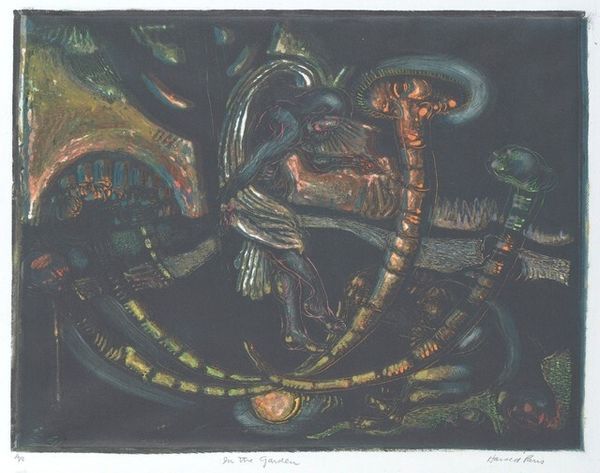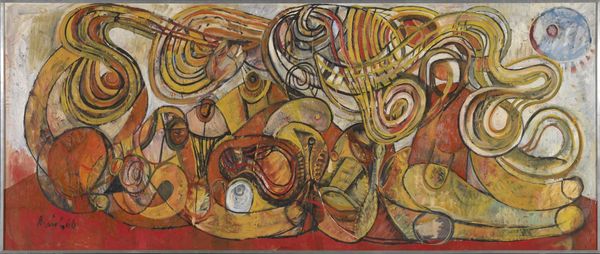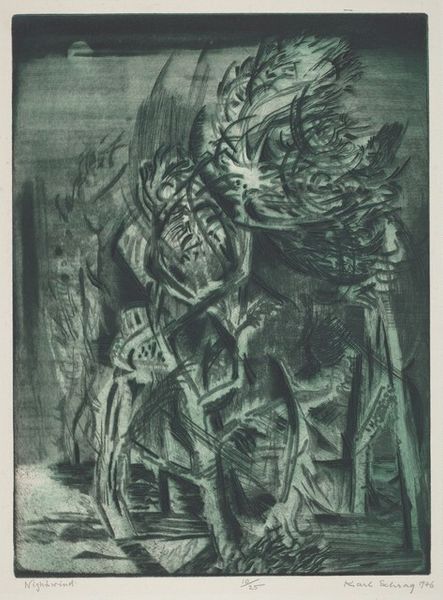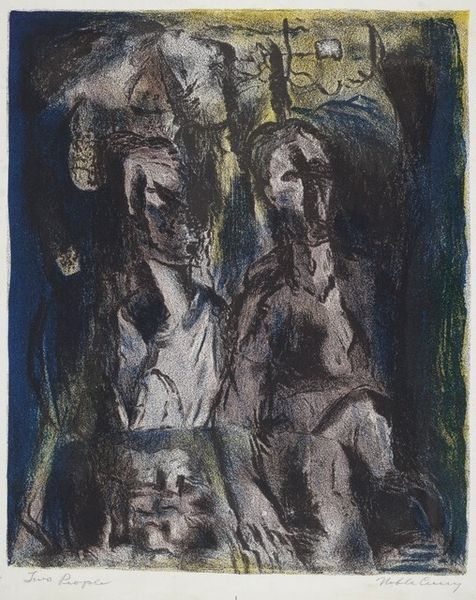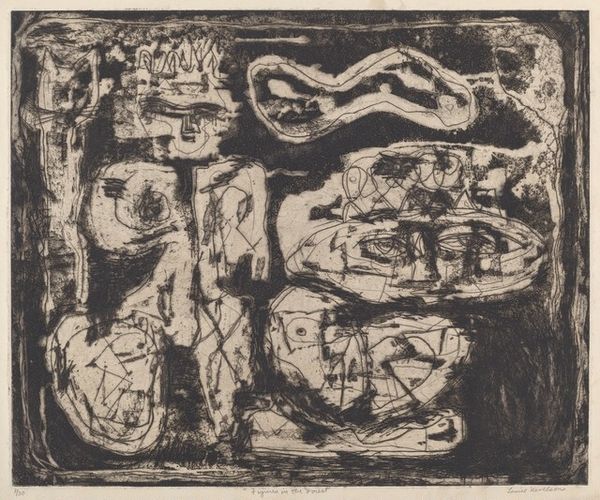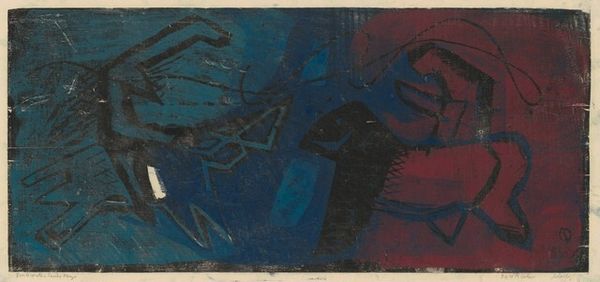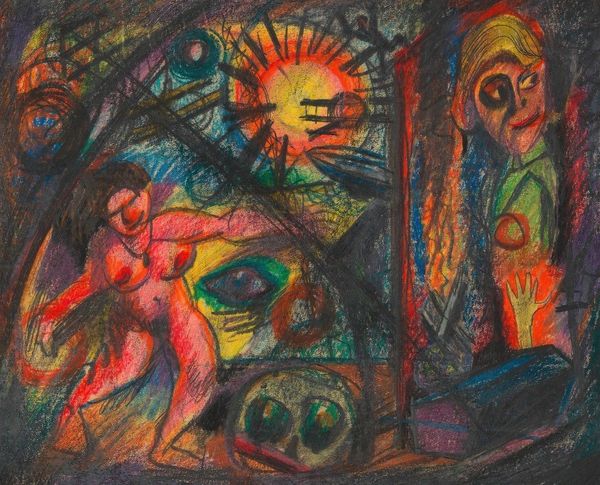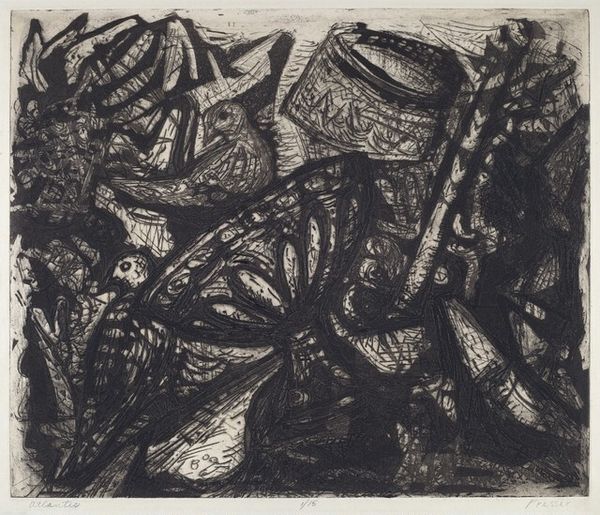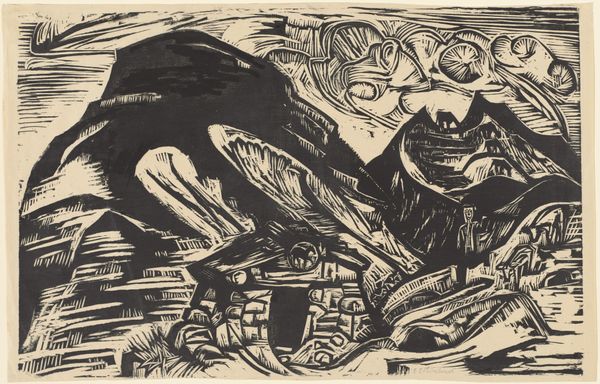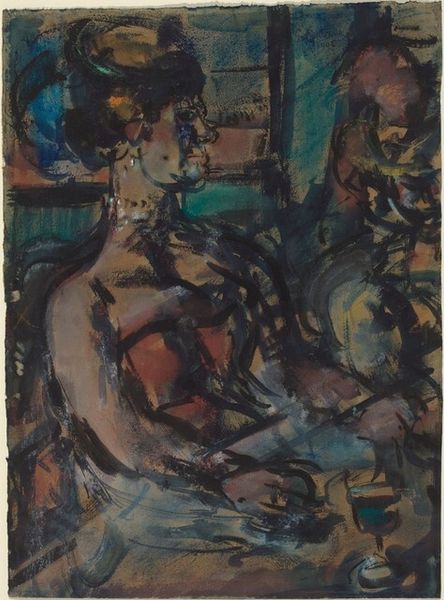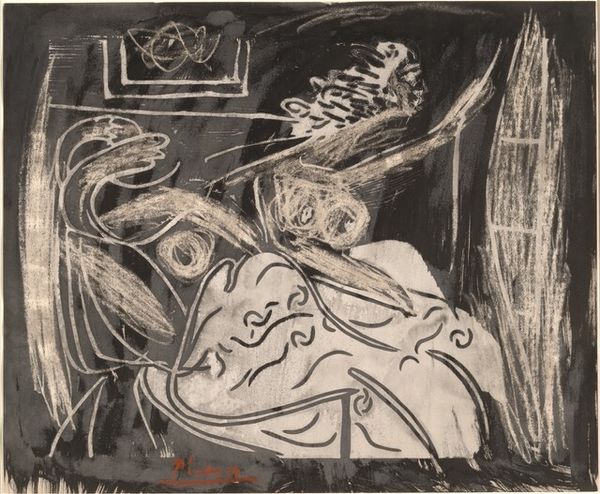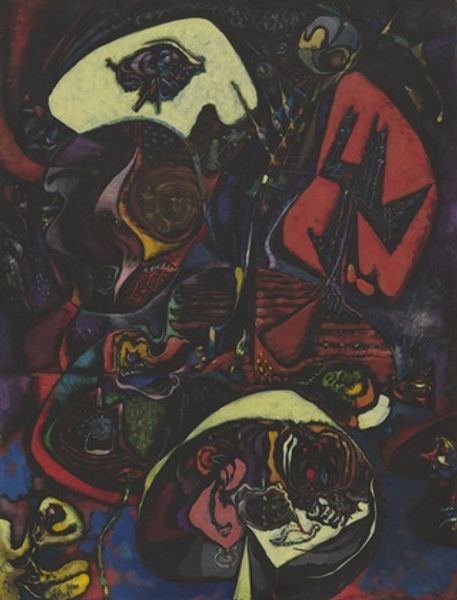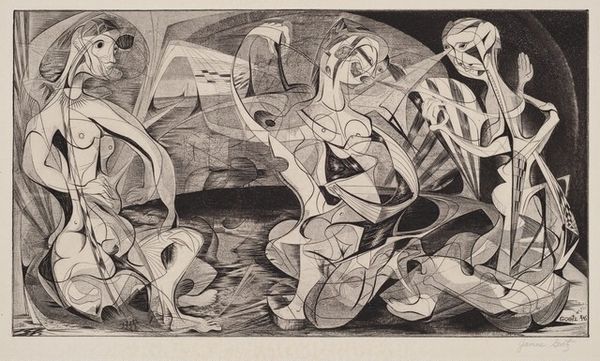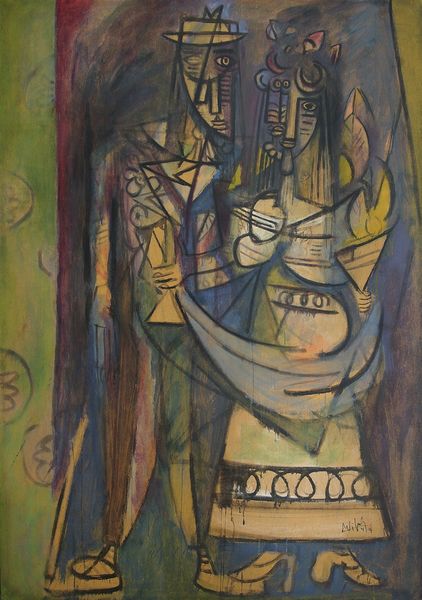
Dimensions: overall: 48.5 x 61.1 cm (19 1/8 x 24 1/16 in.)
Copyright: National Gallery of Art: CC0 1.0
Curator: Ah, yes. This mixed-media piece from Max Beckmann, done sometime between 1936 and 1947, entitled "Pandora's Box." It is such a compelling work! What do you think? Editor: Claustrophobic. Overwhelming. My first instinct is to look away, honestly. Like peering into a disturbed dream. Curator: Precisely! Beckmann manages to encapsulate so much with this one canvas—a dense layering of symbols that speak to anxieties about hidden darkness and unexpected consequences. You immediately feel the weight of the myth. Editor: I'm particularly drawn to the geometric shapes that feel so oppressive, circling and swirling like vultures. The cylinders with these eerie red centers recall inescapable eyes. And what’s behind Pandora's Box looks like a vortex! Curator: Very astute. Geometric shapes create an inescapable tension that contrasts with the chaos implied within the smoke and suggested turmoil pouring out from this literal "Pandora's Box". Beckmann was exploring figuration while working during a pretty troubled time in history, which feels strongly reflected in the image's emotional violence. The use of painting, drawing and ink is combined to communicate on multiple planes of experience. Editor: It's as though he’s externalizing internal turmoil, making the invisible visible, very much in the spirit of German Expressionism. Those sharp lines almost seem like fractured emotions given form, and all the cylinders and lines have trapped the hope which is, traditionally, all that remained after the box was open. Curator: Absolutely! It suggests that the human spirit's been wounded; hope may remain but is in constant distress. Notice also that "Pandora's Box" is very much an artistic rendering. One might argue that it seems more like an old movie projector than a box... the kind of mechanism we rely on to distort the truth for our own amusement. Editor: That is a powerful idea! Especially when you link it back to Beckmann’s anxieties, the notion that we are both captivated by and ultimately undone by these narratives and symbols makes me think more of this as an apocalyptic statement than merely an exploration of personal demons. It really invites contemplation, and perhaps catharsis, don’t you think? Curator: Agreed! Beckmann always makes me reconsider the shadows in myself, as well as those around me. It’s like staring directly into a difficult mirror that offers some uncomfortable yet truthful insights.
Comments
No comments
Be the first to comment and join the conversation on the ultimate creative platform.
